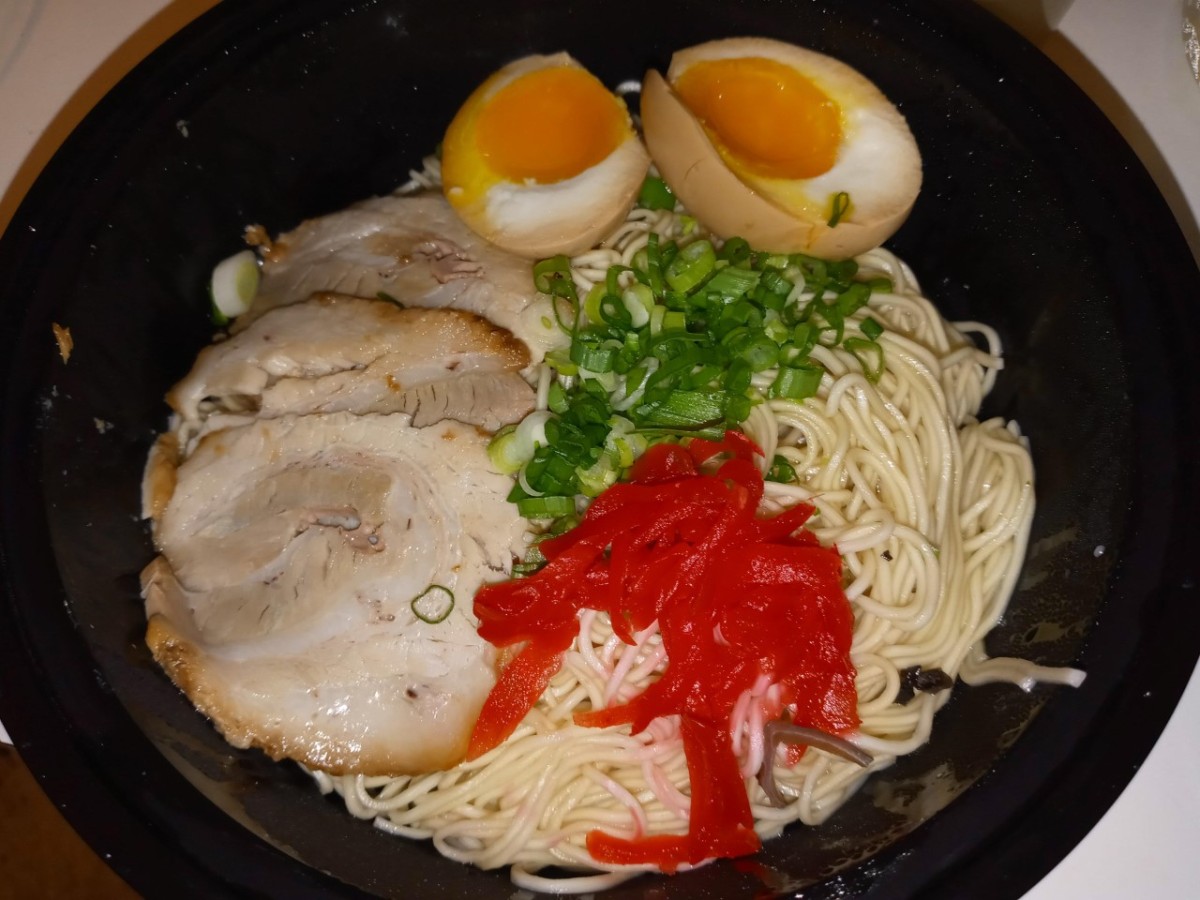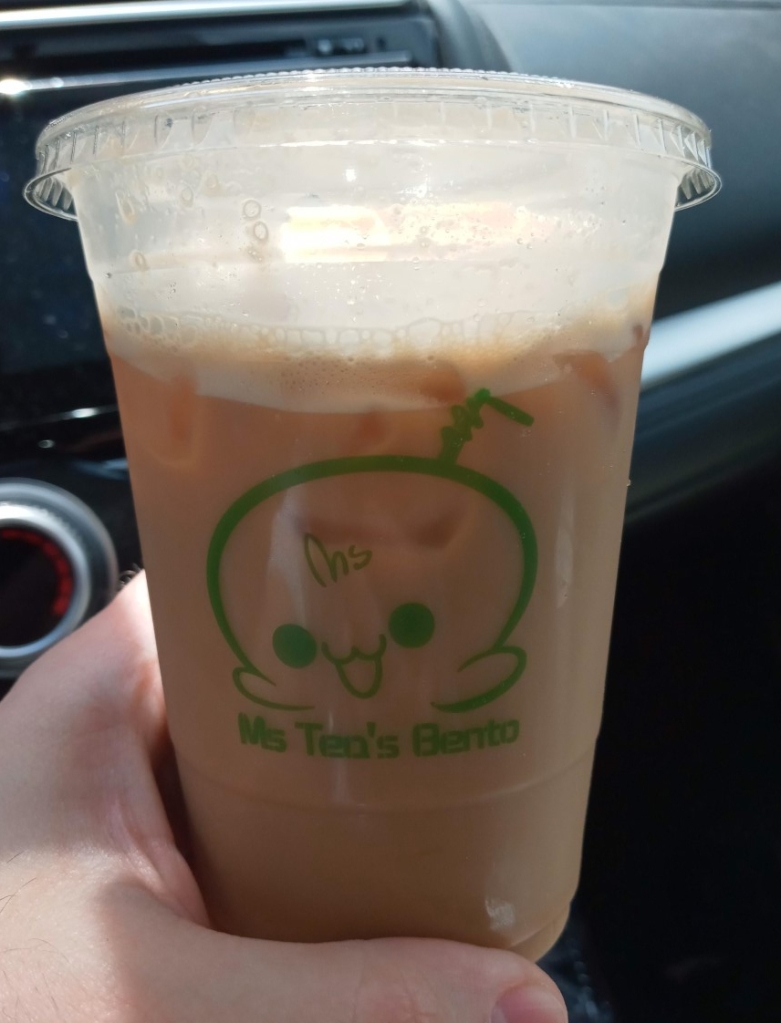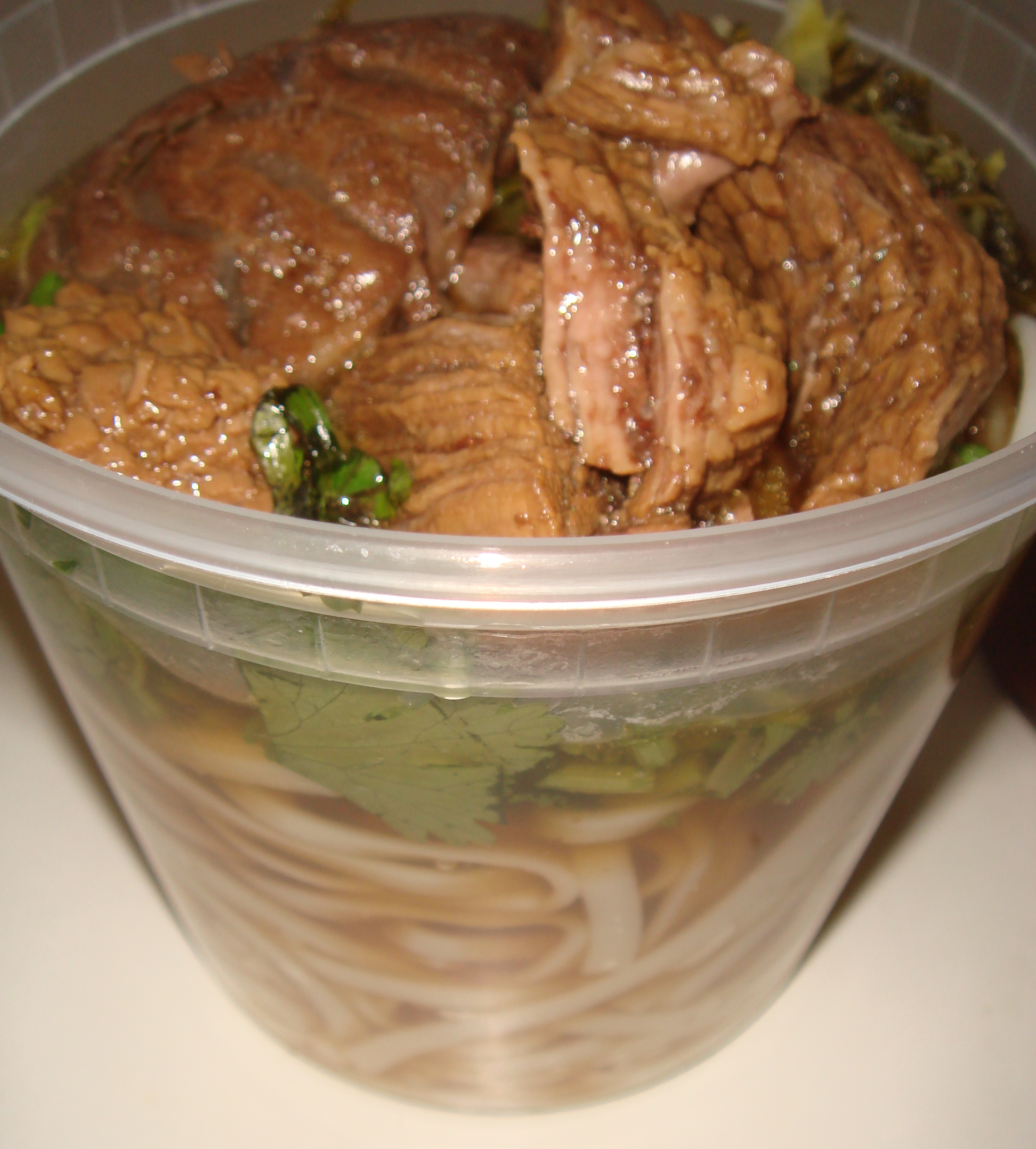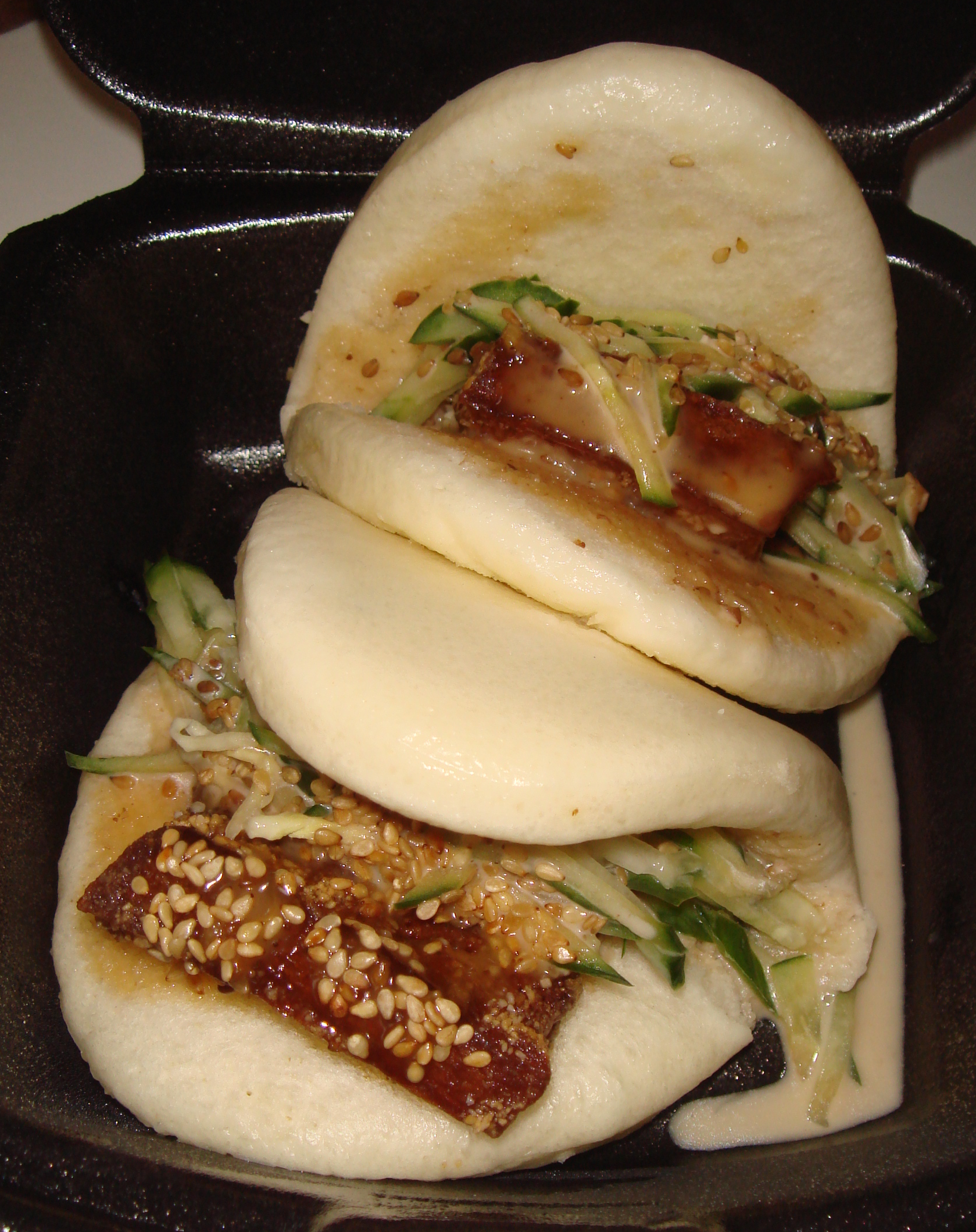JINYA Ramen Bar (https://www.jinyaramenbar.com/) was first founded in California by second-generation restauranteur Tomo Takahashi, after he had already opened a JINYA restaurant in Tokyo in 2000. There are multiple JINYA Ramen Bar locations around the United States, including two in the Orlando area — the first in Thornton Park near downtown Orlando, and the second just opened in Oviedo.
I had never been to the Thornton Park JINYA location, but always meant to try it after reading rave reviews and rhapsodic recommendations. When I heard one was opening closer to me, I was excited, and when co-owner Taff Liao invited me to a “friends and family” preview over Facebook, I was overjoyed.
I just got home from that lunch, where I ran into foodie-about-town and all-around good dude Ricky Ly, founder of the Tasty Chomps! food blog and the really terrific Orlando Foodie Forum Facebook group, arriving at the same time to dine with his family. It was a great experience, and I am here to tell you that JINYA Ramen Bar will be an asset to Oviedo and East Orlando. Don’t hesitate to check it out.
***Before continuing with my review, I must note that even though I fully expected to pay for my meal, I did not realize that the “friends and family” preview would be comped by the restaurant, like a dress rehearsal for the staff before its grand opening for the general public. I don’t get invited to stuff like that often, and I honestly would have felt more comfortable paying. Still, I was honored to be there, loved my meal, and left what I hope was a generous tip for the friendly staff. But in the spirit of full disclosure and candor for my constant readers, you stalwart Saboscrivnerinos, I was not charged for this wonderful lunch.***
The restaurant is on the ground floor of the Ellington apartment complex, one of the many new developments in Oviedo. 
The dining room is a gorgeous, modern, dare I say sexy space with nice light fixtures, brick walls, that trendy and ubiquitous plant wall, and lots of natural light streaming in through floor-to-ceiling windows. 
An open kitchen overlooks the dining room. There is an outdoor patio, but you will be inhaling exhaust from busy Mitchell Hammock Road if you sit out there, and it was already hot outside when I arrived just before noon, even in late October.

Being a solo diner, I sat at the bar, where two friendly female bartenders hustled, making gorgeous, artful cocktails while keeping my Sprite glass full. One of them patiently explained the menu in detail, and I did not have the heart to tell her I studied it in advance. The entire staff is warm and welcoming and well-trained during this soft opening, so expect excellence when you arrive in the days and weeks to come.
I started with an order of crispy rice with spicy tuna, from the Small Plates section of the menu. I have loved these at other Japanese restaurants, including the late, lamented Kabuto, which closed back in December. This order came with three small rectangular bricks of rice, coated in panko breadcrumbs and fried to light, crispy perfection. Each crispy rice brick was topped with a puree of mildly spicy tuna and tiny, cute jalapeno pepper slices.

I tried one plain, one dipped in the zingy seasoning sauce, and one dipped in the gyoza sauce (it ain’t just for gyoza anymore!), and no matter what I did, every bite was magnificent. I could see ordering these every time I return to JINYA Ramen Bar in the future, which will hopefully be often. In fact, if they ever decide to offer a larger order of ten or twelve, I would probably order that.

I could not go to JINYA Ramen Bar without ordering a bowl of ramen, even if it was unseasonably hot outside. JINYA makes its own ramen noodles from two different kinds of flour, then ages them in a special noodle-aging machine, which proves that we truly live in an age of technological marvels. I ordered JINYA’s version of my standard ramen order at any Japanese restaurant, tonkotsu ramen, which features a rich, creamy pork bone broth. Specifically, I got the JINYA Tonkotsu Black, with a slice of savory, fatty, tender pork chashu, green onion, two sheets of dried seaweed called nori, a seasoned soft-boiled egg with a perfect runny, creamy yolk, garlic chips, garlic oil, fried onion, and “spicy sauce.” It was served with thin noodles, but different bowls of ramen come with thicker noodles. I like ’em thicc, so I will try that next time.

It was masterful. All the ingredients harmonized so well. The broth was delicious enough to slurp even without anything else in it. It wasn’t spicy-hot, but it sure was temperature-hot, enough to make me sweat and blow my nose. The noodles had an ideal springy chew, and the nori sheets softened as soon as I dunked them into the steaming broth. It was one of the better versions of tonkotsu ramen I have enjoyed in Orlando, but different enough from mainstays like Oviedo’s underrated Ramen Takagi and Baldwin Park’s trendy Domu that you still must dare to compare.
I could have kept going, and in fact, I thought long and hard about topping off this luscious lunch with two salmon poke mini-tacos on crunchy rice “tortilla” wrappers. But when I found out I was being comped, I felt guilty taking advantage of the JINYA owners’ generosity and opted against ordering anything else. I will absolutely return — with my wife and with friends — as soon as I can. It is a straight shot east from our home, and if this was just a preview while the staff was training, I can’t imagine how much it will improve as everyone gets more experience, because it already felt like a well-oiled machine that had been operating for a while.
Thank you to Taff Liao for inviting me, and I’m sorry I did not get to meet you. I did get to chat briefly with Eric, another one of the owners, who was very friendly. Trust me, folks — you are in for a treat. Having not been to the Thornton Park JINYA Ramen Bar before, the new Oviedo location did not disappoint in any way. In fact, it is almost too cool for Oviedo and East Orlando, but here’s hoping everyone discovers it and enjoys it as much as I did.

















 But there were two highlights, even though these other rolls were solid. One was the mango passion roll that my wife chose ($16; on the right side in the above photo), with yellowtail, salmon, and avocado inside, topped with more yellowtail and salmon, plus mango salsa. It was AWESOME. What a great combination. I always order mango in my poke bowls with tuna and/or salmon when it is available, and it worked so well here.
But there were two highlights, even though these other rolls were solid. One was the mango passion roll that my wife chose ($16; on the right side in the above photo), with yellowtail, salmon, and avocado inside, topped with more yellowtail and salmon, plus mango salsa. It was AWESOME. What a great combination. I always order mango in my poke bowls with tuna and/or salmon when it is available, and it worked so well here.

 In fact, we returned two weeks later to dine in and take advantage of happy hour, since the food was so good.
In fact, we returned two weeks later to dine in and take advantage of happy hour, since the food was so good.


























































